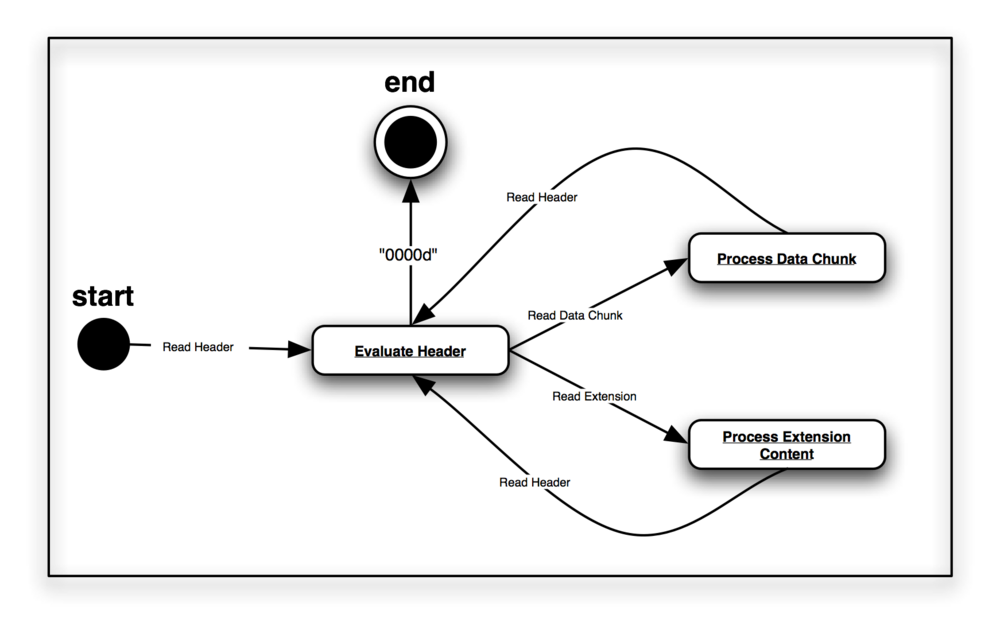DAP4 Chunking
Overview
Chunking Scheme
chunked-body = *chunked-section last-chunk
chunked-section = chunk | chunk-extension
chunk-extension = chunk-size "x" 1*(chunk-ext-name [ "=" chunk-ext-val ] ";")
chunk = chunk-size "d" chunk-data
chunk-size = 7HEXDIG
last-chunk = 7("0") "d"
chunk-ext-name = token
; sequence of 7-bit ASCII printable chars
chunk-ext-val = token | quoted-string
; quoted-string is DQUOTE token DQUOTE
chunk-data = chunk-size(OCTET)
; exactly chunk-size bytes
Graphical representation of chunking scheme
size - Stored in the first seven bytes are the size of the chunk (in bytes). The size does not include the first 8 bytes which are the chunk size and the chunk type (x or d). The size is a 16 bit integer encoded in 7 bytes as 7 ASCII characters that represent the size as a 7 hexadecimal (base 16) digits. If the size is 0, this signifies the end of the transmission, no more chunks follow.
type - The eighth byte is the type of chunk that follows. The type can be one of
- x - extension, one or more name=value; pairs
- d - data, actual data
data - The data part of the chunk, meaning either extensions or data, not both
Extensions are a name/value pair and can represent information needed by the underlying communication layer. For example: status=error; would mean that an error has occurred. This chunk would not contain the error/exception information itself. Following chunks would hold that information and would be of type d (for data).
It is possible that the chunk may not come across in one read call to the underlying socket layer. The first 8 bytes represent information about the chunk, the first seven bytes being the size of the chunk and the eighth byte being the type of data the chunk contains. Read should be called until the entire chunk has been received.
Read/receive should be called until the last chunk in the transmission is received. The last chunk is represented by chunk size of 0.
Chunking State Diagram
Error response
If an error is encountered during the processing of a request (either with the request itself, the processing of the response to the request, or sending of the response) then the server will send an extension chunk to the client with the name/value pair "status=error;", and, following that chunk, data chunks will contain the error information followed by the last chunk. The extension chunk with the error status could come following a series of data chunks containing the partial response.

